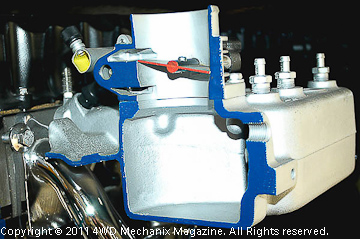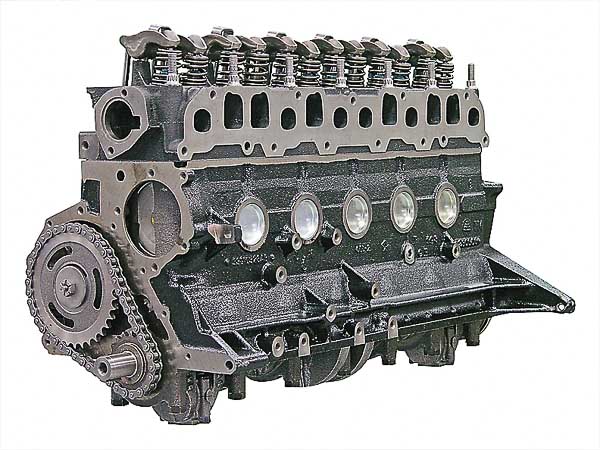
The 4.0L inline six with a hybrid 4.2L crankshaft has become popular—and practical as well! The ease with which this engine can be built makes the “stroker motor” a must for Jeep owners facing an engine rebuild.
Jeep’s relationship with the 4.2L/258 and 4.0L inline six-cylinder engines bridges a span of 35 years (1971-2006). The 4.6L inline six hybrid is as likely to show up in a ’72-up CJ as a 2006 TJ Wrangler. Then there’s the 4.0L XJ Cherokee, with literally millions of units built between 1987 and 2001, each a candidate for the 4.5L-4.7L engine build!
The 4.2L is the carburetion era, while all 4.0L inline sixes have multi-point fuel injection (MPI/EFI). In theory, the 4.6L long-block can work with both carburetion and EFI/MPI. Most builders, however, opt for the benefits of electronic fuel-and-spark management (EFI) for greater performance and distinct off-pavement drivability gains. This includes conversions to aftermarket throttle body injection (TBI) and the Mopar Performance EFI/MPI Conversion Kit for the 4.2L sixes.
Stroker Motor Tuning Demands
Whether the engine is carbureted or fuel injected, “stroking” the 4.0L block to 4.6L six begins with a 0.030″ clean up re-bore to a new bore size of 3.905″ (originally 3.875″). Add to this a change in the crankshaft’s stroke length from 3.414″ (the stock 4.0L crankshaft) to 3.895″ (the retrofit 4.2L crankshaft).
So, we’ll round off and call this a “new” 280 cubic inch inline Jeep six! The original 4.0L inline six was 242 cubic inches. A 4.2L is 258 cubic inches. This is a 22 cubic inch increase over a stock 4.2L and 38 cubic inches larger displacement than a 4.0L!

Given this displacement increase, these stroker motors add horsepower and torque. A stock MPI/EFI 4.0L will put out from 177 to 193 horsepower (depending upon the year and whether an “H.O.” design or not). The 258/4.2L six, in its final emission-laden and carbureted form, eked out a meager 116 horsepower. In stroker 4.5L to 4.7L layout (dependent on the re-bore size), the stroker motor will produce 240-300* horsepower!
